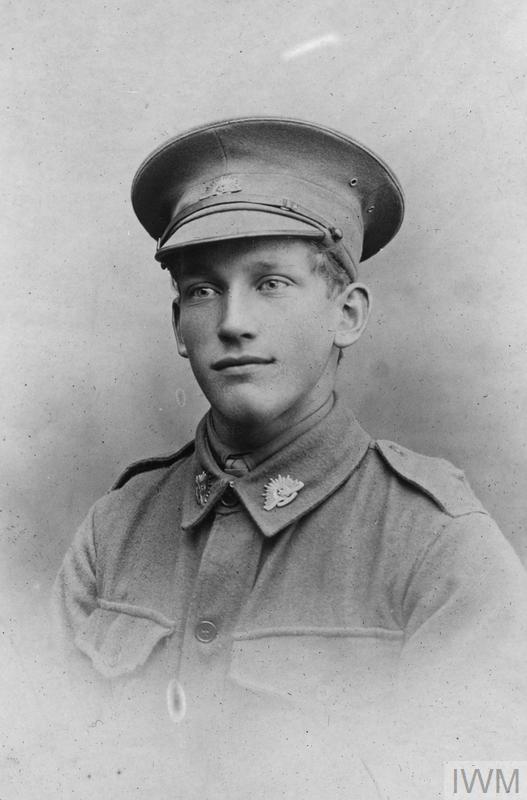28 September 2018
Melbourne First World War hero remembered

The Commonwealth War Graves Commission is marking the end of the First World War Centenary with 120 personal stories of those who made the ultimate sacrifice in the last months of the war. One remarkable story is that of Private George Fowler from Coburg, Melbourne who died on 29 September 1918. The CWGC commemorates a staggering 120,000 men and women who died between 8 August and 11 November 1918
To mark the end of the First World War Centenary, the Commonwealth War Graves Commission (CWGC) has launched its “Road to Peace” project. The project tells 120 personal stories of casualties who died during the final 100 days of the First World War, from 8 August to 11 November.
The stories have been compiled by the CWGC’s team of historians and includes the remarkable account of Private George Fowler, a First World War hero from Coburg, Melbourne. George served as a stretcher-bearer and saw action during some of the major battles on the Western Front, such as the Battle of Polygon Wood, during Passchendaele in 1917 and the Battle of Villers-Bretonneux in 1918 for which George was awarded the Military Medal.
Born in Coburg in Melbourne, George worked as a carpenter before the outbreak of the First World War. Aged 20 years old, in May 1916, George volunteered for overseas service in the Australian Imperial Force. He married his sweetheart Gladys Clare in July, before leaving for France just a month later. In early 1917, Gladys gave birth to a little girl.
George’s first major action was during the Third Battle of Ypres, known as Passchendaele in 1917. Passchendaele is infamous not only for the scale of casualties, but also for its muddy terrain. The area around the city of Ypres was incredibly dangerous for Allied forces on the Western Front, it was surrounded and overlooked on three sides by the German forces occupying the high ground.
George’s role was one of the most arduous, hazardous yet selfless tasks on the battlefield. Stretcher-bearers carried their wounded comrades, sometimes many hundreds of metres, back to safety. Doing so through crowded waterlogged trenches or braving enemy to cross the muddy shell crated battlefield, risking their own lives to save others.
In September 1917, George saw action at the Battle of the Menin Road Ridge and then the Battle of Polygon Wood, where he was wounded, suffering a gunshot wound to the arm. George recovered in hospital and rejoined his battalion in March 1918. His battalion took part in the famous Battle of Villers-Bretonneux, which stopped the German advance towards Amiens in April 1918. It was George’s actions in Villers-Bretonneux, which earnt him the Military Medal. His medial citation reads:
“he displayed conspicuous courage in performing his duties as a stretcher bearer. He continued with ceaseless energy to attend and to carry wounded to the dressing station despite heavy sniping and artillery fire from the enemy. By his unselfish devotion to duty he was instrumental in the saving of life and his cool and gallant bearing set an example to us all.”
In July 1918, George was transferred to the 59th Battalion, Australia Infantry and in September his new battalion went into action during the Battle of the St Quentin Canal, on the Western Front. During the fighting, George was killed. He died aged 22, only a few weeks before the Armistice was signed on 11 November. Upon his headstone is the inscription chosen by his young widow ‘Responsive to his country’s call, he gave his life, his best, his all.’
Despite a population of fewer than five million, more than 330,000 Australians would volunteer and serve during the First World War. More than 62,000 lost their life in the service to their county and are commemorated by the CWGC.
The Road to Peace Project aims to illustrate the global nature of sacrifice of the First World War. From famous casualties like war poet Wilfred Owen, through to relatively unknown individuals; from those dying in battle to those who died of Spanish Flu; each story has been carefully chosen to shine a light on the human stories on the costly Road to Peace.
CWGC Historian, Max Dutton, explained: “Behind every one of our headstones or names a memorial to the missing, is a human story just waiting to be told. Our 100 days “Road to Peace” campaign will remind people of the human cost of the Great War, the sheer diversity of those who took part and the global nature of that sacrifice and remembrance today. We hope Private George’s story will inspire people to find out more about him and his comrades commemorated by the CWGC and visit their graves and memorials.”
From 8 August – the 100th anniversary of the Allied victory at the Battle of Amiens – the “Road to Peace” campaign will conclude on 11 November with the stories of 11 people who died on the very last day of the First World War, even as the guns fell silent. The “100 Days” is a term applied to the final period of the First World War, during which the Allies launched a series of offensives on the Western Front that ultimately led to peace. Not actually 100 calendar days, the term is a reference to the final period of the Napoleonic Wars.
The Road to Peace stories will be shared across the CWGC’s digital channels on Facebook, Twitter and Instagram. A story will appear every day – with a more in-depth feature appearing weekly.

